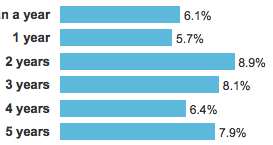An Event Apart 2013
Published 13 years, 2 months pastIt’s a little bit hard to comprehend just how incredible a year we’ve had at An Event Apart. Our colleagues in the audience as well as on stage have been consistently sharp, engaging, and all-around amazing, and I don’t think Jeffrey and I could thank everyone enough even if we were given three lifetimes to tackle the project. With all seven shows this year selling out (some months in advance), we’ve taken the next step and have scheduled eight shows next year, a figure that occasionally causes me to go a little short of breath at the sheer wonder of it all. I think back on the hundred-odd people who filled the room at our very first event, tucked away in the upper back corner of Philadelphia’s Franklin Institute back in 2005, and can scarcely believe how far we’ve come.
If you’re inclined to join us in 2013, and I really hope you are, here are the cities and dates:
- Atlanta – February 18-20
- Seattle – April 1-3
- San Diego – May 20-22
- Boston – June 24-26
- Washington, DC – August 5-7
- Chicago – August 26-28
- Austin – September 30-October 2
- San Francisco – December 9-11
Back to San Diego — hooray! I looove to visit San Diego.
As was the case this year, all eight of 2013’s shows will feature a mix of new and familiar speakers presenting all-new talks shedding light on old problems and new ideas. Thus not every show’s lineup is yet complete: while we already have some speakers confirmed and announced for every event, we’re leaving the later shows in the year open so we can add fresh speakers and timely content.
Since all eight shows went on sale last month we’ve already had a bunch of people register, so you should definitely get those approval processes moving now if you want to avoid being shut out. We had lengthy waiting lists at every 2012 show, and there were very few cancellations. It never feels good to turn people away, but the venues’ capacities are what they are!
Being a part of An event Apart has been an amazing experience for me and for so many people, and our overriding goal is to make 2013 even better. I hope you’ll join us!
